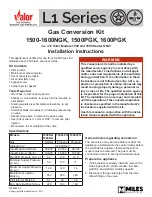
34
Intel NetStructure Cache Appliance Administrator’s Guide
Configuring FTP
The FTP section lets you configure FTP protocols. The following table describes
the options.
Authentication
Server Port
The port on which the locally run authentication server
accepts connections. If the authentication server is remote,
the appliance connects to it on this port.
Local
Authentication
Server Timeout
The number of milliseconds after which the authentication
server aborts an incomplete authorization operation. The
client can retry the operation.
Refer to Configuring NNTP access‚ on page 69
for
information about configuring authentication servers.
Client Speed
Throttle
The number of bytes per second that clients are limited to
during downloading operations. Use a
0
(zero) for unlimited
downloading.
Option
Definition
FTP
connection
mode
❚
PASV/PORT: Specifies the appliance use PASV connection
mode. PASV/PORT is the default FTP connection mode. If
PASV mode fails, the appliance uses PORT mode to initiate
the data connection, and then the appliance accepts it.
❚
PASV only: Specifies that the appliance initiates the data
connection to the FTP server, and the FTP server accepts
it. This mode is firewall-friendly, however, some FTP servers
do not support it.
❚
PORT only: Specifies that the FTP server initiates the data
connection, and the appliance accepts it.
FTP transfers require two connections: a control connection to
inform the FTP server of a request for data and a data
connection to send the data. The appliance always initiates
the control connection. FTP mode determines whether the
appliance or the FTP server initiates the data connection.
FTP inactivity
timeout
(seconds)
Defines the number of seconds before the appliance waits for
a response from the FTP server. If the FTP server does not
respond in time, the appliance abandons the user’s request.
Anonymous
FTP password
Specifies an anonymous password for FTP servers that
require a password for access.
Option
Definition (Continued)
















































